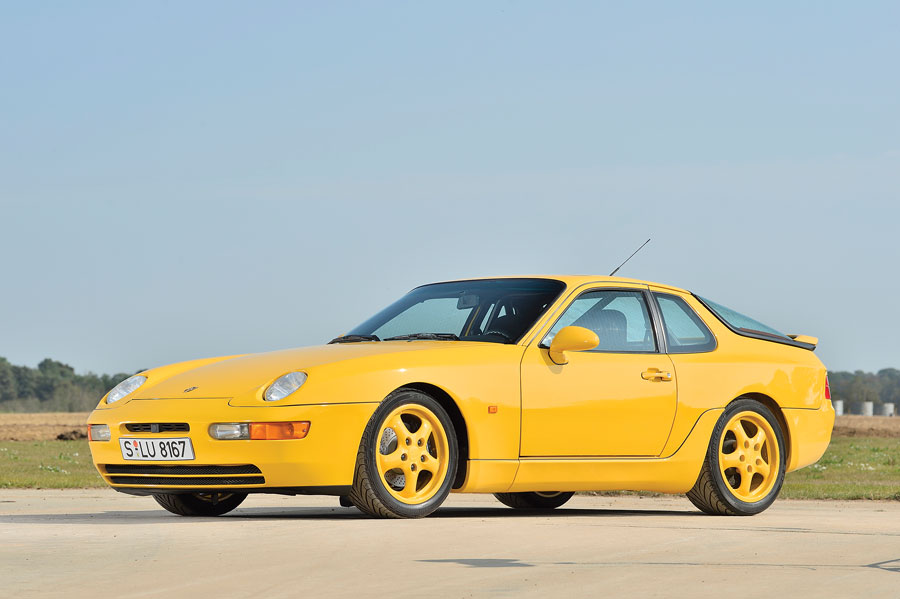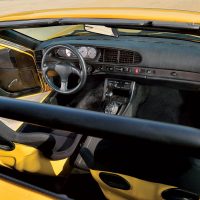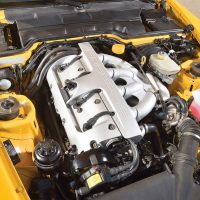SCM Analysis
Detailing
| Vehicle: | 1993 Porsche 968 Club Sport |
| Years Produced: | 1993–94 |
| Number Produced: | 1,923 |
| SCM Valuation: | $29,000 |
| Tune Up Cost: | $900 with OEM wires and cap, $2,500 with belts added |
| Chassis Number Location: | Tag at base of windshield, tag on top of passenger’s side inner fender, stamping on passenger’s side engine compartment firewall |
| Engine Number Location: | Passenger’s side, back of engine by bellhousing |
| Club Info: | Porsche Club of America, Porsche 968 Register |
| Website: | http://www.pca.org |
| Alternatives: | 1992 Porsche Carrera RS, 1992 Corvette ZR-1, 1992 Ferrari 348 |
| Investment Grade: | C |
This car, Lot 257, sold for $54,097, including buyer’s premium, at Silverstone’s NEC Classic Online Auction on November 13, 2020.
The 968 was introduced in 1992 as the final iteration of Porsche’s front-engine, water-cooled, 4-cylinder cars. This series launched in 1976 with the 924, replacing the 914/4 as Porsche’s entry-level model.
Last of the line
The 924 was popular but not an enthusiast’s car. It was built by Audi, which tarnished it in the eyes of Porschephiles. Audi also supplied the 924’s 4-cylinder powerplant, which was the rough equivalent of a tractor engine. The later 924 Turbo was much improved, and hinted at what was to come.
The 944 was introduced in 1983, and it changed everything. With a rear transaxle, 50:50 weight distribution, and as many as 208 horses, it was not only an excellent driving car, but also attractive and well-constructed. When the 944 Turbo with up to 247 horsepower came along three years later, it only got better.
Although assembled in an Audi plant, the 944 was finally accepted as a “real” Porsche. Enthusiasts who lamented the absence of trailing throttle oversteer stuck with 911s and 930s, but more people opted for the 944 variants, which outsold Porsche’s traditional sports cars about 163,000 to 142,000.
A big 4-cylinder
The 968 featured a large, 2,990-cc inline 4-cylinder engine. Naturally aspirated, it developed 237 horsepower and 225 foot-pounds of torque. Vibrations were smoothed out by a counterweighted crankshaft, a design licensed from Mitsubishi. The transaxle was a manual 6-speed, while a Tiptronic automatic was optional.
With the manual gearbox, road testers delivered 0–60 mph passes between 5.6 and 6.1 seconds, with a top speed of 157–162 mph. Those figures were not the stuff of Nürburgring lap records but were sufficiently sporting.
A year after introduction, the 968 was already showing its aged lineage and sales were slow. To help, Porsche developed the 968 Club Sport as a showroom draw for enthusiasts, then irritatingly kept its new toy away from us in North America.
Lighten up
The engine and gearbox remained as on the base model, but subtle changes abounded. The car was lowered 0.80 inches and special 17-inch Cup wheels were an inch larger in diameter. The staggered wheels were 7.5 inches wide in the front and nine inches wide in the rear, shod with 225-mm and 255-mm section-width tires.
Weight was reduced by 220 pounds to 2,910 by a host of small changes:
- Manual windows, mirrors and rear hatch opener
- Non-heated windshield-washer jets
- No rear seats, rear wiper, rear panel lock or central locking
- Reduced sound deadening
- No standard sunroof, a/c or radio (all were optional)
- Smaller battery, wiring harness, alternator and a single radiator fan (unless ordered with a/c)
The 968 Club Sport had black cloth Recaro sport seats, with a color-matched hard back. These were first seen in multi-color leather in the 1992 964 Carrera RS. The Club Sport also featured a sporty three-spoke, non-airbag steering wheel.
There were six standard paint colors: Grand Prix White, Guards Red, Speed Yellow, black, Maritime Blue and Riviera Blue. The rear deck was labeled “968 CS” and “Club Sport” side scripts in contrasting colors were optional.
Have it your way
Performance enthusiasts ordered the M030 sport suspension together with the M220 limited-slip differential. This included bigger Carrera RS brakes with special front spindles and cross-drilled rotors, Koni shocks with threaded collars in front, coil-overs added to the rear, and bigger adjustable sway bars.
Club Sport aficionados estimate that 20%–25% of 968 CSs came with the M030 package. Many cars have retrofitted upgrades and are advertised as M030 cars, but you can be certain by requesting the factory build sheet.
The 968 Club Sports garnered a good reputation. The British magazine Performance Car deemed it their “Performance Car of the Year” in 1993. And Walter Röhrl was widely quoted as saying that the 968 CS was the best-handling Porsche he had ever driven. It added up to Porsche selling 1,923 examples of the Club Sport, even without North American market availability.
What’s the rarest RS?
We should note that Porsche developed two additional praiseworthy 968 models. First was the 968 Turbo S. (There was no “non-S” Turbo.) Based on the Club Sport, the Turbo S came with a big rear wing, bigger front spoiler, NACA ducts on the hood, and modular Speedline wheels. Its engine developed 305 horsepower and 369 foot-pounds of torque. Porsche built only 14 examples and they are now highly collectible.
The last 968 variant was the Turbo RS. Just four were built, with either 337 or 355 horsepower depending on the turbocharger chosen — one for German ADAC GT, another for FIA/IMSA racing. This model is also the answer to the question, “What’s the rarest Porsche RS ever built?”
Ultimately, front-engine, 4-cylinder Porsches were replaced by the mid-engine Boxster, arguably an even better design. Today, the 924 GT/GTS/GTS Club Sport, 944 Cup, perhaps 944 Turbo S, and the 968 Club Sport/Turbo S/Turbo RS are all collectible.
A “factory” car
The car at Silverstone’s auction was retained by the factory for about three years as a demonstrator. Ordered with just the optional sunroof and radio, it had a well-documented history, even after it left Porsche’s care. Sold in November 1996 with about 60,000 km (37k miles), it stayed in Germany, going to a new owner in Nuremberg.
In early 1998 it went to England, where it cycled through three owners, ending up with the editor of 911 & Porsche World in 2005 with 118,000 km (73k miles) showing. At this point the car was modified with aftermarket parts for better performance, including suspension, brakes, a Quaife differential and a half roll cage. When consigned, the car showed 144,200 km (89,400 miles).
The 25-year rule
Since these cars are over 25 years old, they are now easily importable under federal regulations. This is certainly helping values in an already-thin market.
Two good friends to your correspondent have made 968 CS deals recently. One car was Maritime Blue; with factory M030/M220; optioned with a/c, power windows and radio; showing 56,300 km (35k miles); and had 95% of its original paint. It sold for $63,000, FOB Germany. It is being imported to the U.S., so will be about $75,000 landed. We consider that car to be a good buy.
The second car was a Guards Red, very original 968 CS with no M030/M220 upgrade, showing about 45,000 km (28k miles), already imported to the U.S. It sold in Oregon for about $65,000 — also a good price.
This 968 Club Sport sold for $54,097 all-in, which seems appropriate given the mileage and modifications. ♦
(Introductory description courtesy of Silverstone Auctions.)



